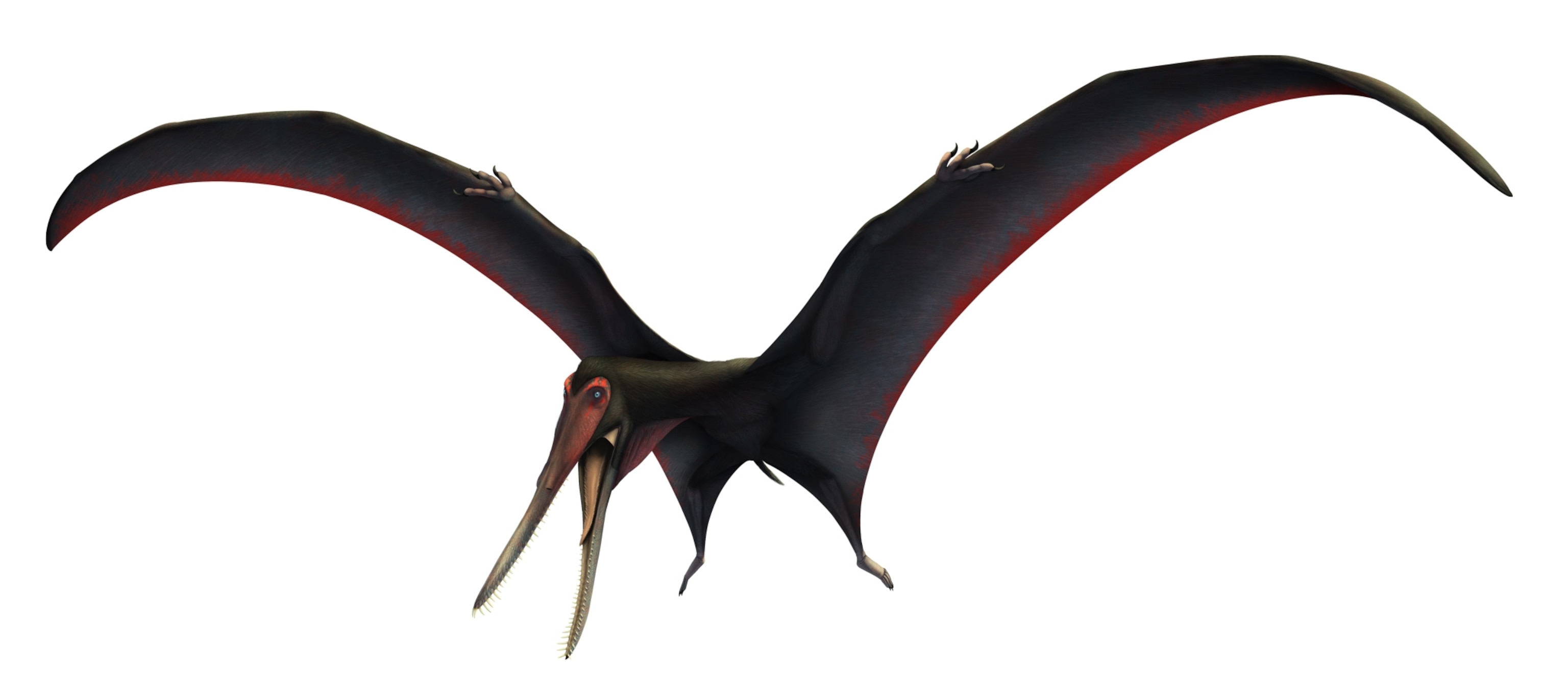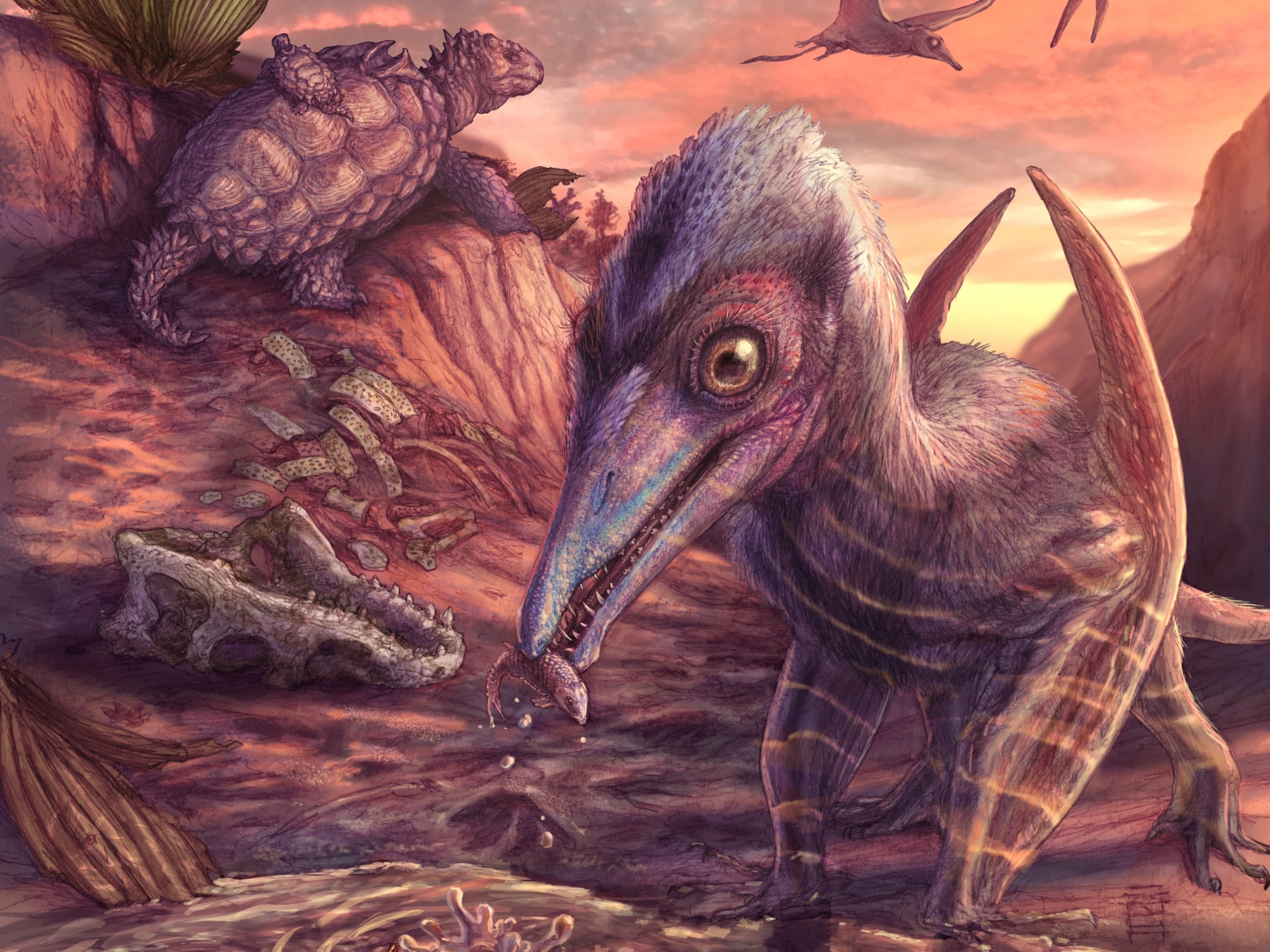A fossilized creature with oddly dark bones has emerged as the first of its name in a newly described line of toothy pterosaurs, paleontologists report in the journal Historical Biology. Dubbed Targaryendraco wiedenrothi, in a nod to the fictional House Targaryen from the blockbuster TV series Game of Thrones, the reptile is the most complete Cretaceous pterosaur known from Germany.
The team also assigned six other already known pterosaurs believed to be close relatives to the newly created Targaryendraconia group. Members of this line had wingspans between 10 and 26 feet and unusually narrow snouts that ended in teeth jutting forward from the tip of the jaw.
Found in places as disparate as England, the U.S., Brazil, and Australia, “all these species are from shallow coastal environments and probably fed on fish,” says study leader Rodrigo Pêgas, a paleontologist at Universidade Federal do ABC in São Bernardo do Campo, Brazil. “The slenderness of jaw is the main feature they share … it’s the most extreme slenderness in the jaws of any toothed pterosaurs.” (Find out about a recently named species of “frozen dragon” pterosaur found in Canada.)
The reassignment showcases how much our understanding of these winged wonders has increased in recent years, both via the discovery of new fossils and via new efforts to analyze and compare fossil material in museum collections, says Taissa Rodrigues, a pterosaur expert at the Universidade Federal do Espírito Santo in Brazil, who was not involved in the new study.
“The naming of Targaryendraco crowns the recognition of an overlooked lineage of flying reptiles … that lived for millions of years during the Cretaceous,” she says.
You know (almost) nothing
A flying contemporary of the dinosaurs, Targaryendraco lived 130 million years ago, when the part of Germany where it was found was the coastline of a warm and shallow sea.
The fossil includes parts of its ribs and wings, as well as its jaws. That may not sound like much, but the specimen is relatively complete compared to the very fragmentary remains of other German pterosaurs from this time period. The bones reveal that Targaryendraco had a long and narrow snout with sharp teeth perfect for snapping up fish from the surface of the ocean.
“The wings were elongate and narrow, and this shape is specific for modern birds and bats that fish on the wing,” Pêgas says. (Here’s why pterosaurs were the weirdest wonders on wings.)
Amateur fossil hunter Kurt Wiedenroth found the fossil bones in 1984 in a clay pit at Engelbostel, near Hanover in northern Germany. They areperhaps dark in color due to a quirk of the minerals in the rocks where they formed. In 1990, Wiedenroth donated the specimen to the natural history museum in Stuttgart, where it was studied and assigned as a new species within the Ornithocheirus group of pterosaurs, called Ornithocheirus wiedenrothi.
However, as more pterosaurs have been discovered and scientists’ understanding of these flying reptiles has ballooned, it became clear that some of the species labelled Ornithocheirus were not closely related and instead represented different kinds of pterosaurs.
In paleontology, it’s common to have named groups that contain species that are still poorly understood. These become so-called wastebasket taxa, into which newly unearthed species that are fragmentary or have not been thoroughly vetted may get tossed, explains Darren Naish, a paleontologist affiliated with the University of Southampton in the U.K.
“People assumed other finds from around the world belonged to the same group, and kept applying the same name,” he says. “Among pterosaurs, Ornithocheirus is the best example.”
But Pêgas and his co-authors at the Museu Nacional in Rio de Janeiro and the Institut Català de Paleontologia in Barcelona, Spain, have now restudied Ornithocheirus wiedenrothi and redescribed it as Targaryendraco wiedenrothi, since true members of Ornithocheirus have a more rounded jaw.
“It's been thought for decades among pterosaur specialists that this species isn’t really part of Ornithocheirus,” says Naish, who was not one of the study authors.
A dance with dragons
As for the new name, the dark fossils reminded the study authors of the black bones of the House Targaryen dragons. What’s more, “pterosaurs have inspired some biological aspects of the dragons” from the series, they write in their paper.
Typically, when dragons are depicted in books, films, and artwork, they have six limbs: four legs and two wings.
“But this doesn’t make any biological sense,” Pêgas argues. In nature, no known vertebrate creature has ever existed that has this many limbs in this configuration.
Taking cues from the anatomy of pterosaurs, which are real creatures that lived millions of years ago, Game of Thrones creator George R. R. Martin instead imagined his fictional dragons to have four limbs: two wings for forelimbs and two hind legs.
Pêgas says he admired this decision: “I always thought this was very nice, especially because I work on pterosaurs.” Plus, he admits, “I am a big nerd and a big fan of Game of Thrones.”






